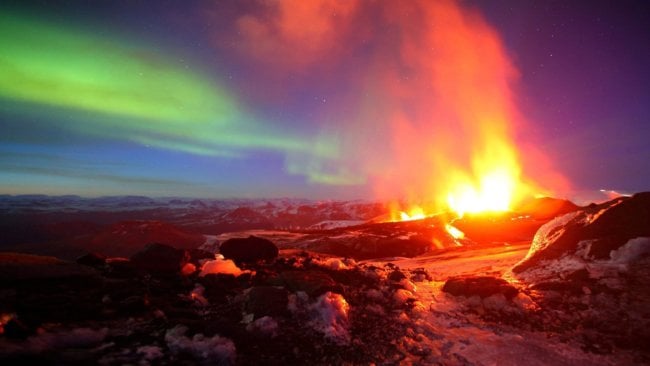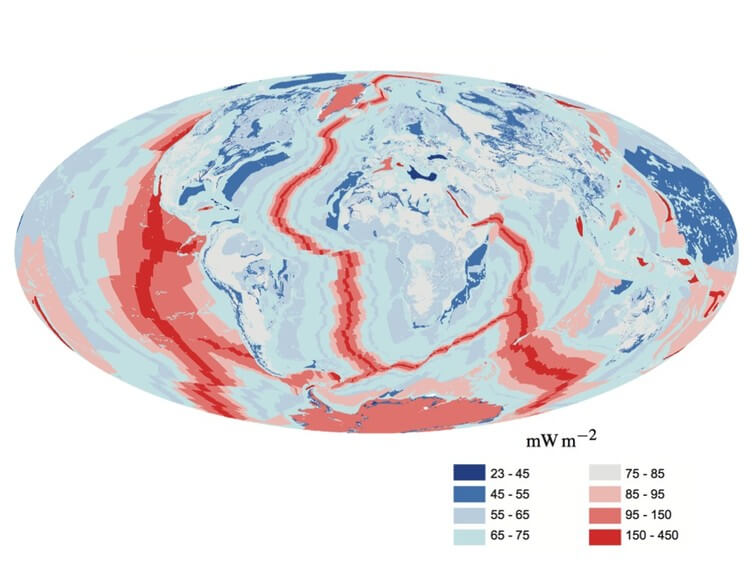
Lying in the sun on a warm summer day, not always aware that a significant amount of heat comes from the depths of the Earth. This heat is equivalent to more than three times the energy consumption of the whole world is moving and important geological processes, such as the movement of tectonic plates and the magma at the Earth’s surface. But despite this, where exactly is born to one half of this heat remains a mystery.
It is believed that a certain neutrino type particles with extremely low mass emitted by radioactive processes in the bowels of the Earth, can be an important key to solving this mystery. The problem is that they are almost impossible to catch. But in a new article published in the journal Nature Communications, scientists described a method that might work.
Known sources of heat in the Earth is radioactive decay and residual heat from the time when the planet was only created. The amount of heat from radioactivity based on measurements of the composition of rock samples has not yet been defined — 25-90% of the total heat flux.
Elusive particles
The atoms of radioactive materials have unstable nuclei, and therefore can be cleaved (to decay to a stable state) with emission of radiation of which is converted into heat. This radiation consists of different particles of specific energies depending on what material you gave them — including neutrinos. When radioactive elements decay in the crust and mantle of the Earth, they emit “geoneutrino”. In fact, every second, the Earth emits more than a trillion trillion such particles into space. The measurement of their energy could tell what substance they produce, and hence on the composition of the Earth’s interior.
The main known sources of radioactivity on the Earth are unstable types of uranium, thorium, and potassium — this is what we have learned from studying rock samples at a depth of 200 miles beneath the surface. What lies below this depth, is unclear. We know that geoneutrino emitted by the decay of uranium, have more energy than emitted in the decay of potassium. Thus, measuring the energy of geoneutrino, we could find out what type of radioactive material they come. In fact, it is much more simple way to find out what is inside the Earth than drilling dozens of kilometers below the planet’s surface.
Unfortunately, geoneutrino extremely difficult to detect. Instead of having to interact with ordinary matter such as that inside the detectors, they just pass through it. It therefore required a gigantic underground detector, filled with 1000 tons of liquid for the first time to watch geoneutrino in 2003. Such detectors measure neutrinos, recording their collision with atoms in the liquid.
Since then, only one other experiment was able to observe, geoneutrino using similar technology. Both believe that about half of earth’s heat caused by the radioactivity (20 terawatts), can be explained by the decay of uranium and thorium. The source of the remaining 50% remains unknown.
However, the measurements still are unable to measure the contribution of the decay of potassium — neutrino emitted in this process are too low energy. It may be that the rest of the heat comes from the decay of potassium.
New technologies
New research suggests that scientists can map heat flows from the inside of the Earth by measuring the direction in which geoneutrino come, and their energy. Sounds simple, but technologically, this task is extremely complex and requires new methods of detecting particles.
Scientists propose to use a gas filled chamber with detectors of “time projection”. Such detectors generate a multi-dimensional picture of geoneutrino colliding with the gas inside the chamber and knocks the electron out of the atom gas. The movement of this electron can be tracked over time to recover one dimension (time). Imaging technology with high resolution could then reconstruct two spatial dimensions, the motion of the electron. In currently used liquid detectors, the particles collide and scatter, are a short distance (because they are in liquid), and its direction is impossible to determine.

Such detectors smaller scale currently used for precise measurement of neutrino interactions and search for dark matter. Scientists have calculated that the size of the detector required to detect geoneutrino of radioactive potassium, will be 20 tons. To properly map the composition of the mantle the first time, it needs to be 10 times more massive. A prototype of such a detector is already built and is working on his scale.
Measurement of geoneutrino thus can help to display the heat flow within the Earth. This will help us to understand the evolution of the inner core by assessing the concentrations of radioactive elements. It would also help to solve the long-standing mystery of the source of heat which provides convection (heat transfer by movement of fluids) in the outer core that generates the Earth’s geomagnetic field. This field is of vital importance for the preservation of our atmosphere that protects life on Earth from harmful radiation from the sun.
Quite strange that we know so little about what is happening under the ground, but we continue to explore. What else to hide secret depths of our planet?
Why nobody knows where half of the heat in the bowels of the Earth?
Ilya Hel